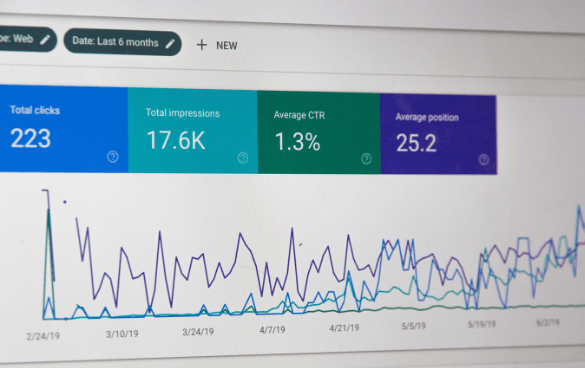Using Remarketing in Google Analytics: A Comprehensive Overview
Utilizing remarketing in Google Analytics offers services a tactical edge in reaching out to potential customers. This overview will drop light on the crucial actions entailed in harnessing the complete possibility of remarketing in Google Analytics, leading to enhanced advertising results.
Recognizing Remarketing in Google Analytics
Remarketing in Google Analytics allows organizations to purposefully target users who have previously connected with their internet site or mobile app. By leveraging information from Google Analytics, companies can develop customized remarketing listings based on individual habits, such as pages gone to, actions taken, or details goals achieved. This powerful device allows services to re-engage with users that have revealed passion in their products or solutions, eventually increasing the chance of conversion.
Understanding the various types of remarketing methods is important for an effective campaign - What Is “Remarketing” In Google Analytics?. Google Analytics provides numerous options, including standard remarketing, vibrant remarketing, and remarketing lists for search ads (RLSA) Each kind offers a special function and can be tailored to fulfill details marketing goals
Moreover, analyzing the efficiency of remarketing campaigns is necessary for enhancing outcomes. Google Analytics gives valuable insights right into the performance of various remarketing strategies, permitting businesses to make data-driven choices and fine-tune their targeting technique. By constantly checking and adjusting remarketing initiatives based upon analytics information, organizations can make the most of ROI and drive success in their advertising and marketing initiatives.
Establishing Up Remarketing Projects

After establishing audience listings, the next step is to connect Google Analytics with Google Ads. By linking these two systems, businesses can flawlessly transfer audience listings from Google Analytics to Google Ads for remarketing functions. This integration enables more accurate targeting and far better campaign performance.
Once the accounts are linked, companies can produce remarketing campaigns in Google Ads using the audience lists previously defined in Google Analytics. These campaigns can be tailored with details ad creatives, messaging, and bidding strategies to properly re-engage with previous site visitors and drive conversions. By adhering to these steps, companies can utilize the power of remarketing to improve their advertising and marketing initiatives and boost ROI.
Using Target Market Division Methods

Predefined segments in Google Analytics enable you to rapidly assess common audience groups like brand-new users, returning individuals, or individuals that completed a particular objective on your website. Personalized sectors, on the various other hand, allow you to create special segments based on certain requirements that are very important to your business goals. Dynamic remarketing lists instantly readjust based upon individual habits, revealing personalized advertisements to customers that have connected with your site particularly means.
Analyzing Remarketing Efficiency Metrics
Upon reviewing the performance of remarketing campaigns in Google Analytics, the evaluation of key efficiency metrics offers beneficial insights right into audience involvement and conversion prices. By diving into metrics such as click-through rates (CTR), conversion prices, cost per purchase (CPA), and return on advertisement spend (ROAS), marketers can determine the success of their remarketing initiatives. CTR shows the percentage of individuals who clicked on the ad after viewing it, mirroring the ad's importance and appeal. Conversion prices determine the percentage of customers who finished a preferred action, such as making a purchase, after clicking on the advertisement. Certified public accountant reveals the average expense incurred for each and every conversion, helping examine campaign profitability. ROAS, on the various other hand, measures the revenue generated for every dollar invested on marketing. Evaluating these metrics enables online marketers to maximize campaigns, improve audience targeting, and designate spending plans properly to boost overall remarketing performance.
Optimizing Remarketing Methods
When refining remarketing strategies in Google Analytics, concentrating on target market division is vital for achieving campaign success. By splitting your target market right into particular segments based upon their habits, demographics, or passions, you can tailor your advertisements better per group. This targeted strategy my latest blog post boosts the chance of engaging customers who have actually currently shown rate of interest in your service or products, causing greater conversion prices.
One more critical element of maximizing remarketing approaches is constantly testing and refining your projects (What Is “Remarketing” In Google Analytics?). A/B testing different ad creatives, messaging, or offers can aid you identify what reverberates finest with your target market and drives the most conversions. By assessing the performance of these tests in Google Analytics, you can make data-driven decisions to maximize your remarketing initiatives even more
Moreover, leveraging vibrant remarketing can significantly boost your campaign results. This feature allows you to reveal personalized advertisements to users based upon their previous communications with your web site, showcasing solutions or items they have formerly viewed. By supplying customized material to users based on their rate of interests and have a peek at these guys actions, dynamic remarketing can help increase engagement and drive conversions.
Final Thought
To conclude, harnessing remarketing in Google Analytics is a tactical technique to target users that have previously engaged with a site. By developing personalized audience lists and making use of target market division approaches, companies can optimize remarketing advocate increased conversion rates. Analyzing efficiency metrics and continuously optimizing methods are vital for making the most of the efficiency of remarketing initiatives.
Google Analytics offers numerous alternatives, including standard remarketing, vibrant remarketing, and remarketing checklists for search advertisements (RLSA)After setting up audience lists, the following action is to connect Google Analytics with Google Ads. By linking these 2 systems, organizations can flawlessly move audience checklists from Google Analytics to Google Ads for remarketing functions.When the accounts are connected, companies can develop remarketing projects in Google Ads utilizing the my response audience provides previously specified in Google Analytics.When refining remarketing methods in Google Analytics, focusing on audience division is critical for accomplishing campaign success.